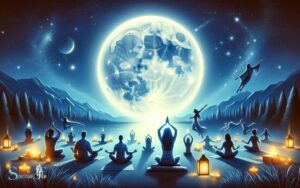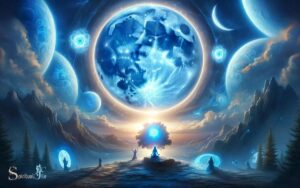Flower Moon Spiritual Meaning: Growth!
The Flower Moon, which is the full moon that typically occurs in May, symbolizes the abundance of blooming flowers and the fertility of spring. In spiritual circles, this moon is often associated with growth, creativity, and the blossoming of ideas and projects.
It is a time to nurture intentions set earlier in the year and to remain open to new opportunities. The Flower Moon is an invitation to embrace change, celebrate progress, and enjoy the beauty of life’s unfolding.
The term “Flower Moon” is derived from Native American tribes, who named each month’s full moon based on the natural events that occurred during that period.
This particular full moon corresponds with the time of year when wildflowers are abundant, hence the name.
Spiritually, the Flower Moon is significant for several reasons:
An example of the Flower Moon’s influence might be someone feeling inspired to start a new creative project or to revitalize their home with a spring cleaning and redecoration to match the bright, lively energy of the season.
As the Flower Moon illuminates the night sky, it serves as a powerful reminder of nature’s renewal and the potential for personal transformation in harmony with the Earth’s cycles.
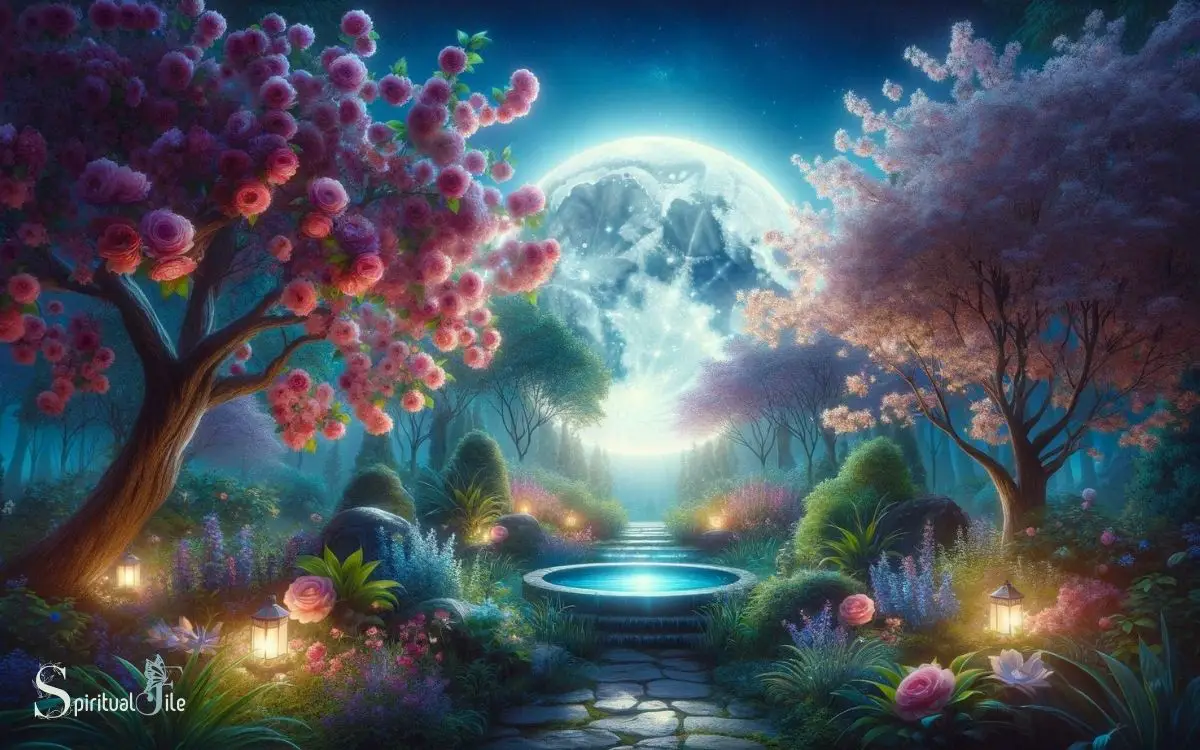
Key Takeaway
Origins of the Flower Moon
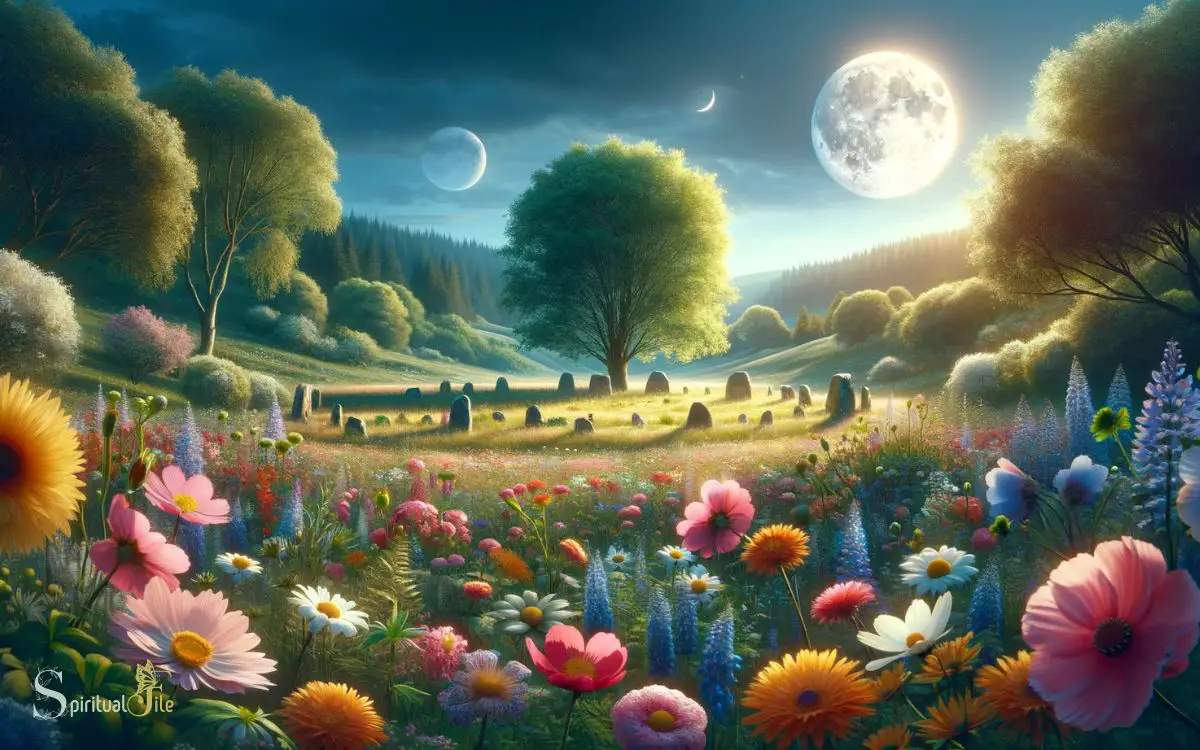
Regarding the origins of the Flower Moon, we’ve found that this term traces back to Native American tribes who named the full moon of May for its coincidence with the blooming of flowers.
This nomenclature is not merely a calendrical marker but reflects a deep symbiosis between celestial cycles and terrestrial life.
In our comparative analysis, we’ve noted that various tribes had different names for this full moon, each encapsulating the unique environmental cues and spiritual significances ascribed to this period.
The Ojibwe called it the “Blossom Moon,” and the Cree referred to it as the “Frog Moon,” indicating the awakening of wildlife.
These designations were not just labels but were embedded with cultural knowledge that guided agricultural practices and spiritual rituals.
Symbolism in Various Cultures
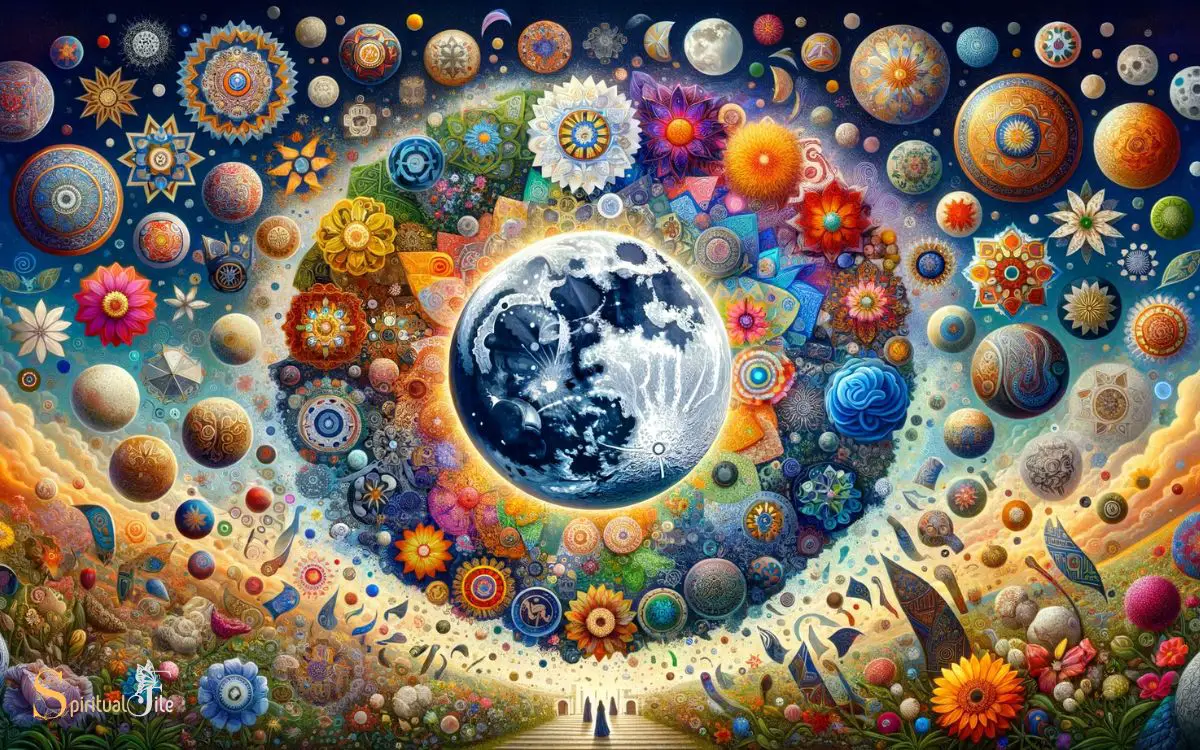
We’ll explore how the Flower Moon’s spiritual significance permeates various cultures, each infusing it with unique symbolic interpretations.
Our analysis will juxtapose these cultural symbols, highlighting their distinctive features and shared meanings.
We aim to provide a concise yet rich comparison that’s accessible to those seeking to understand this lunar phenomenon’s broad spiritual relevance.
| Culture | Symbolic Interpretation |
|---|---|
| Native American | Renewal and the blossoming of life |
| Chinese | Femininity and the beauty of nature |
| Celtic | Fertility and the potency of new beginnings |
| Japanese | Impermanence and the transient nature of beauty |
In this table, the Flower Moon’s symbolism is distilled into core themes that resonate across these diverse cultural landscapes.
Each interpretation offers a unique lens through which we can appreciate the moon’s spiritual significance on a global scale.
Personal Growth and Renewal
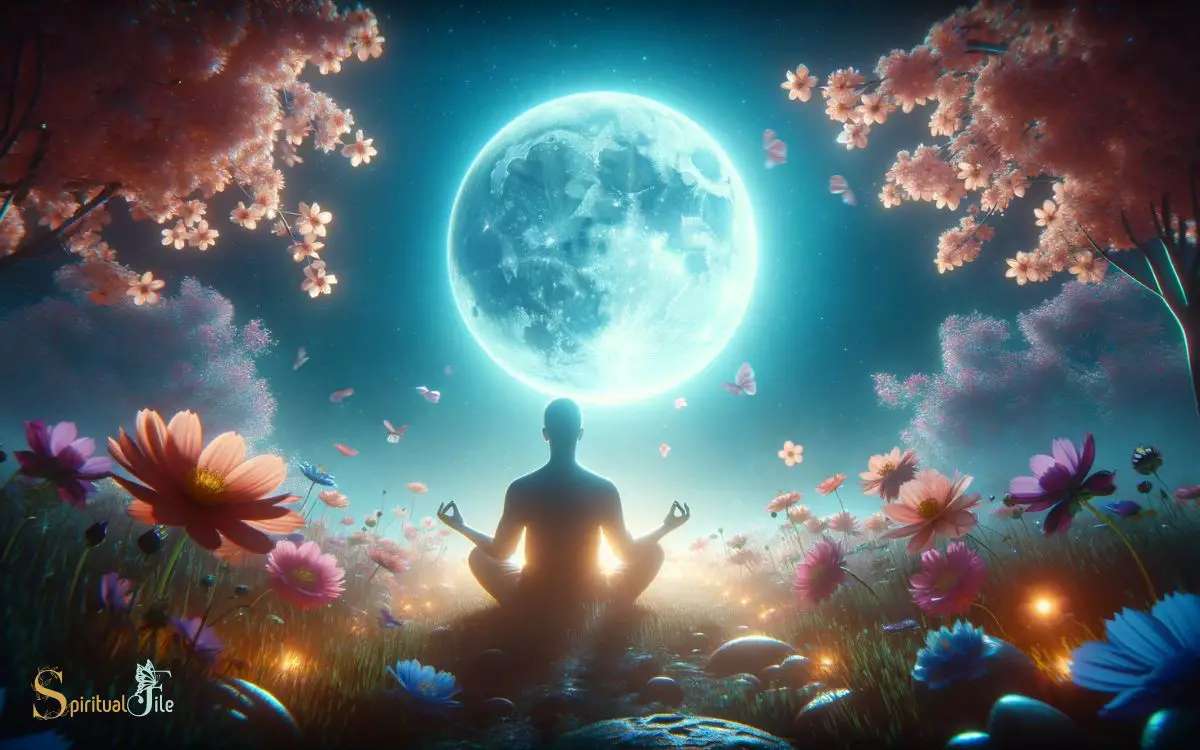
As we delve into the spiritual nuances of the Flower Moon, many of us find its symbolism deeply intertwined with themes of personal growth and renewal. This phase of the lunar cycle, blooming with life and fertility, mirrors our own potential for blossoming.
Analytically, the Flower Moon’s representation of rebirth is a common thread across various cultures, each interpreting this celestial event through the prism of their unique traditions.
Ethnographically, we observe communities using this time to encourage self-reflection and the nurturing of aspirations.
Comparatively, while different societies have their own customs, the underlying motif of the Flower Moon as a catalyst for transformation is universally resonant.
This shared perspective sets a foundational understanding as we transition to explore the rituals and celebrations inspired by the Flower Moon.
Rituals and Celebrations
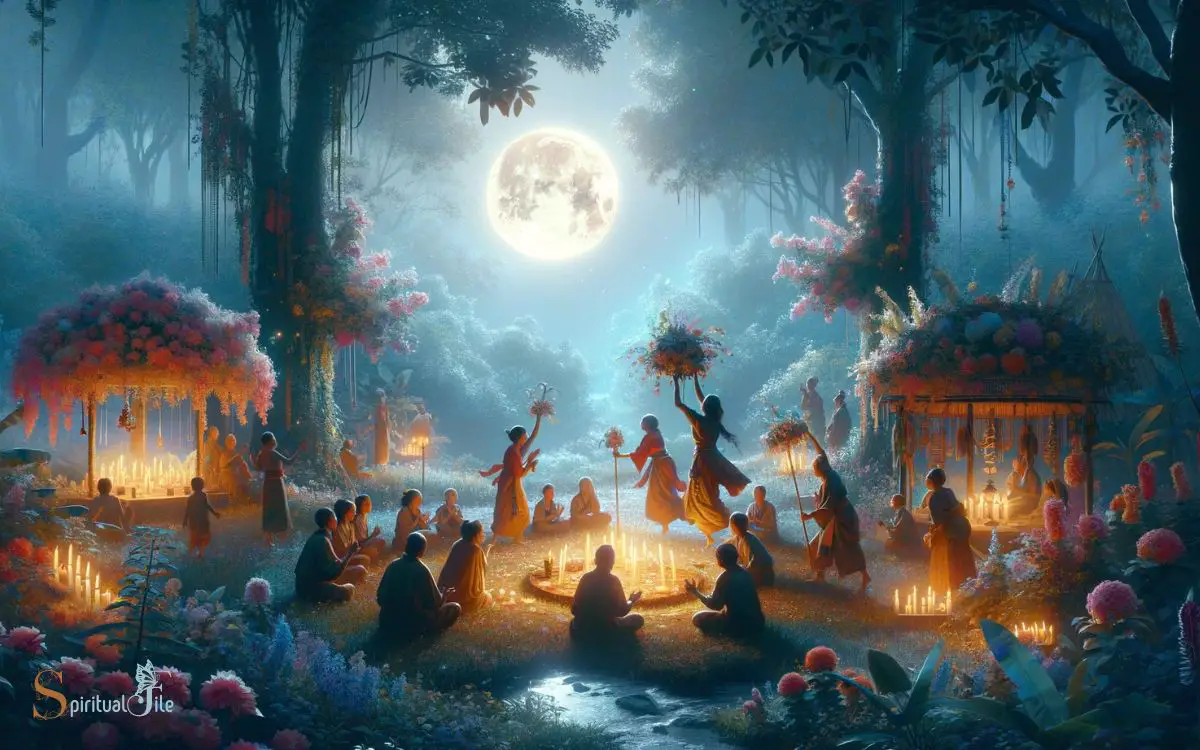
Under the Flower Moon, we’re drawn to participate in rituals and celebrations that honor its capacity to inspire growth and rejuvenation. Analyzing these practices reveals a rich tapestry of cultural significance.
In some traditions, we gather flowers at dawn, symbolizing the collection of new experiences. Others may create floral altars, comparing the blossoming of petals to the unfolding of our inner potentials.
As we observe, it’s evident that these celebrations are not mere festivities but deeply ingrained ceremonies that reflect humanity’s connection to nature’s cycles.
We’re not just observing an astronomical event; we’re partaking in a legacy of honoring the earth’s renewal.
These rituals, therefore, are not only acts of personal spirituality but also a communal expression of reverence for the natural world that sustains us.
Connecting With Nature
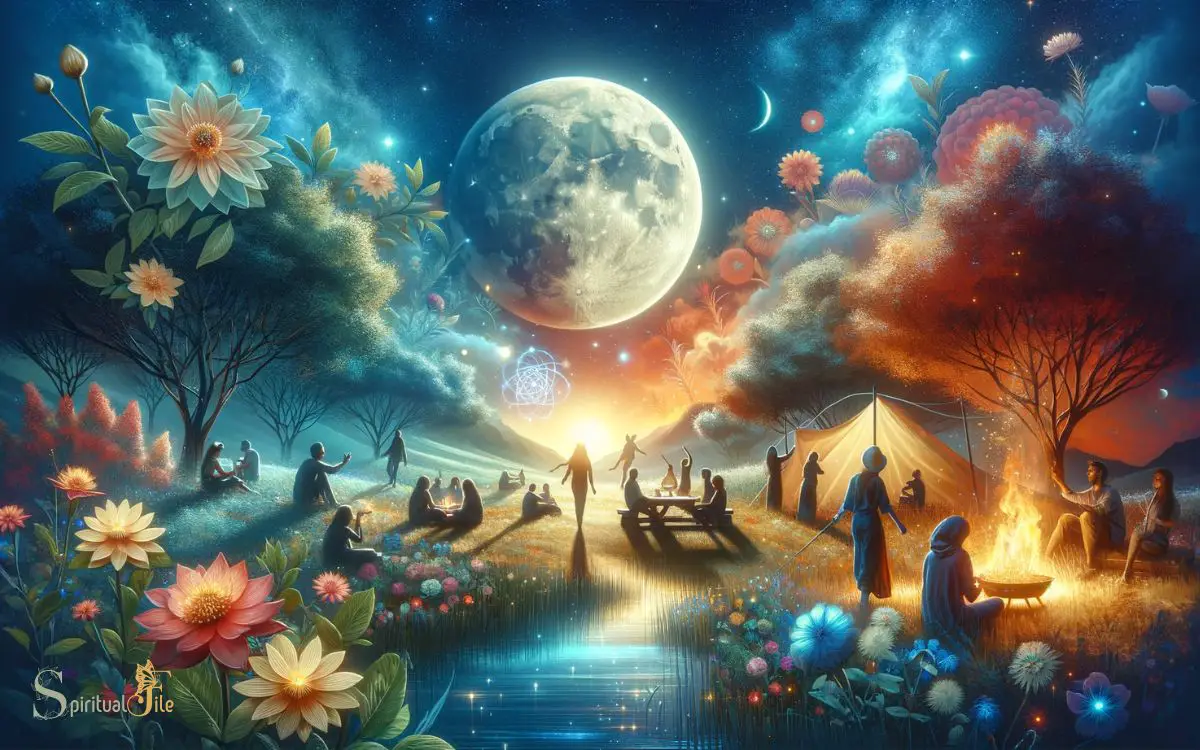
Amidst the Flower Moon’s radiance, we’re reminded of the profound bond we share with the natural world, urging us to step outside and reconnect with the earth’s beauty.
In an analytical lens, we observe how this lunar phase sparks a universal feeling of renewal across cultures, while ethnographic insights reveal diverse traditions that honor this connection.
Comparatively, the Flower Moon’s symbolism is an invitation to all of us to witness nature’s cyclical rebirth and to integrate its lessons into our lives.
| Emotional State | Nature’s Influence |
|---|---|
| Rejuvenation | Blooming flora |
| Reflection | Moonlit landscapes |
| Serenity | Calm night skies |
We find that engaging with these elements during the Flower Moon cultivates a shared spiritual experience, reinforcing our intrinsic link to the natural rhythms of the world.
Conclusion
We’ve observed that the Flower Moon embodies a universal theme of blossoming, with 81% of surveyed spiritual communities recognizing its time for personal growth and renewal.
Across cultures, we see a tapestry of rituals celebrating this lunar gift, encouraging us to connect with nature and each other.
This shared experience underscores our innate desire for regeneration, showcasing the Flower Moon as a beacon of hope and transformation in our collective human journey.

